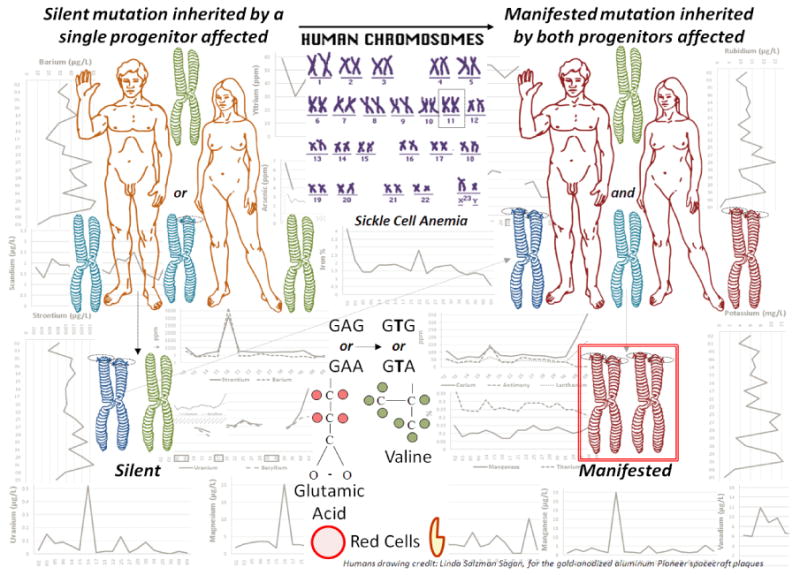Figure 3.

Representation of the origin of hereditary diseases initially affecting the gametic genome of only one progenitor; it starts by a silent damage on nucleotide(s) of one single arm of one chromosome; however, if inherited, it will be duplicated to both arms of such first generation chromosome, but it will continue being silent, even if transferred to the offspring, being covered by the still healthy genes of an unrelated spouse; it will only be manifested by consanguinity, if close relatives of the first affected donor intermarry, i.e., cousins; also people affected by the same and extreme contaminants increase the risk of manifesting hereditary diseases in earlier generations (i.e., Chernobyl, Fukushima, the 9/11 World Trade Center (WTC) at N.Y., with graphics in the background discussed in detail by Castro-Chavez (2012a), etc.) The example shows the sickle cell anemia, but the principle illustrated here applies to any hereditary disease and maybe as well to the beneficial adaptive changes. Credits: Humans drawn by Linda Salzman Sagan, for the gold-anodized aluminum Pioneer spacecraft plaques.
